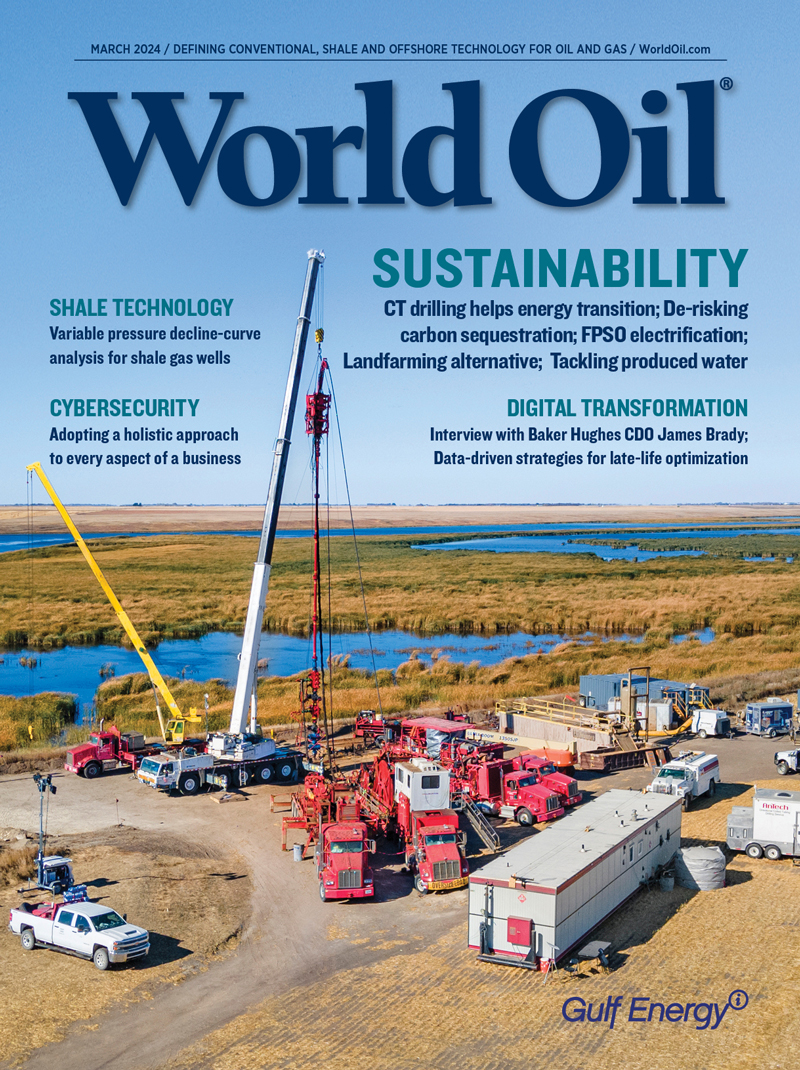Issue: March 2024
Features
Oil reserves are being consumed faster than they’re being replaced. If the reserve replacement ratio doesn’t improve, supply could fail to meet demand before lower-carbon and new energy solutions mature. Companies rethinking strategies are using infrastructure-led exploration as a digital solution to find economically viable new prospects.
A new workflow generates probabilistic history-matches and production forecasts for any decline-curve model while incorporating variable BHP conditions. It provides fast history matches and forecasts of shale gas wells more accurately than traditional DCA while quantifying model uncertainty. The primary value added is an innovative method for probabilistic variable-pressure DCA.
Late-life assets present a myriad of challenges that operators must tackle to ensure continued safety and integrity. Robust data management strategies play an increasingly pivotal role in optimizing asset performance in mature assets to ensure economic viability.
The digital transformation continues to impact various drilling and production functions in many positive ways, and thus its usage and spending for it will expand further, says a veteran upstream executive.
As the energy industry undergoes digital transformation, cyber threats are becoming a material, financial and operational risk. Convergence of operational technology (OT) and information technology (IT) has opened new pathways and attack surfaces for malicious actors to exploit, posing serious concerns for stability and security of energy infrastructure.
SPECIAL FOCUS: Sustainability
Electrification is the most practical solution for decarbonization, especially as renewable generating capacity increases and momentum to electrify vessels, including FPSOs, continues to build. However, the industry still faces headwinds, including high upfront costs, a lack of supporting infrastructure and properly trained personnel, and gaps in standards.
Coiled tubing drilling is an excellent example of how existing technology can help move the oil and gas sector towards net zero.
Produced water is a significant issue for the oil and gas industry, presenting environmental and logistical challenges that require careful management and technological solutions. By implementing effective treatment and reuse techniques, operators can minimize the environmental impact of produced water and enhance their operations’ sustainability.
Ongoing monitoring advances will help operators achieve new levels of operational efficiency and risk management to meet business objectives while providing local communities, regulators and investors with safe, durable CO2 storage.



